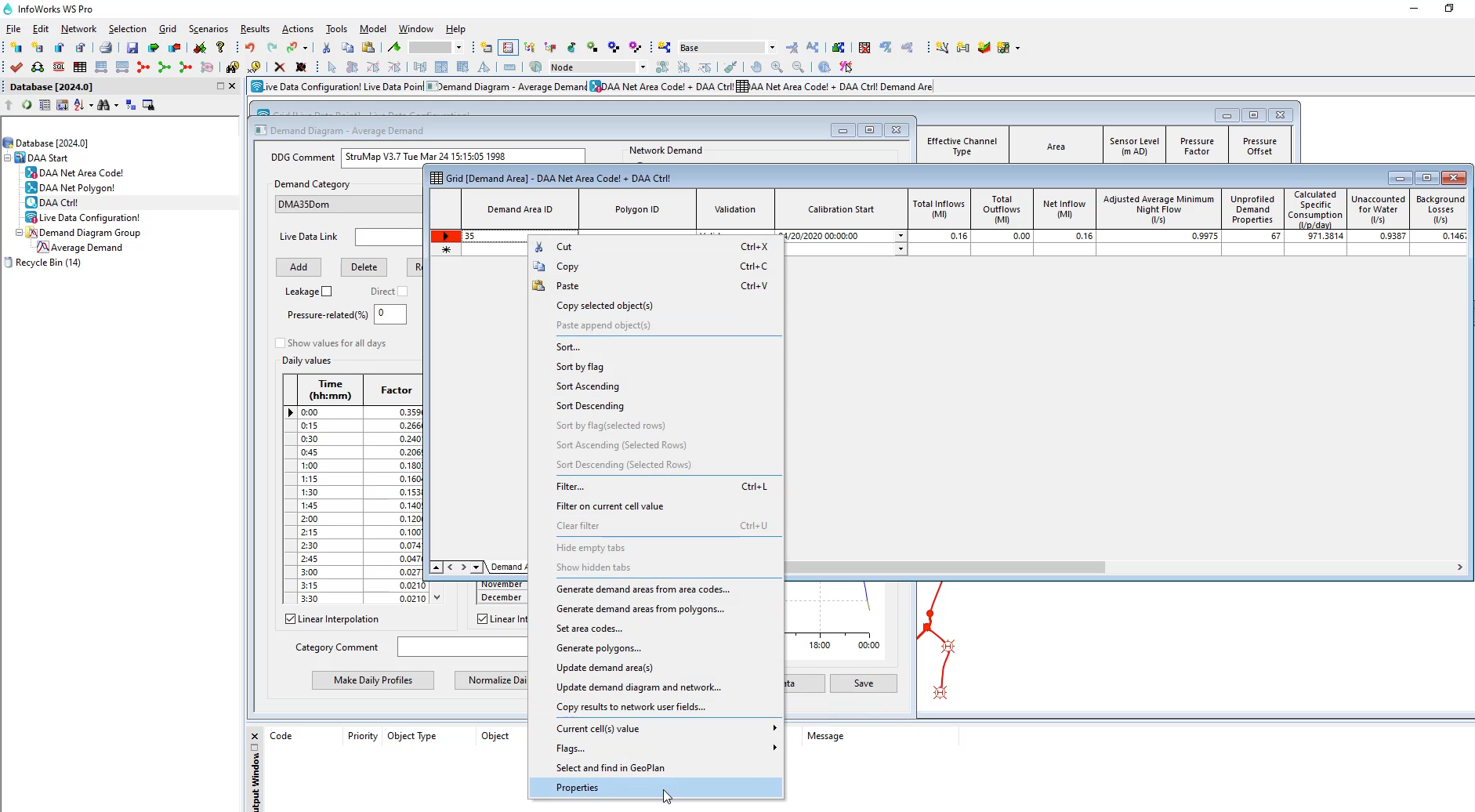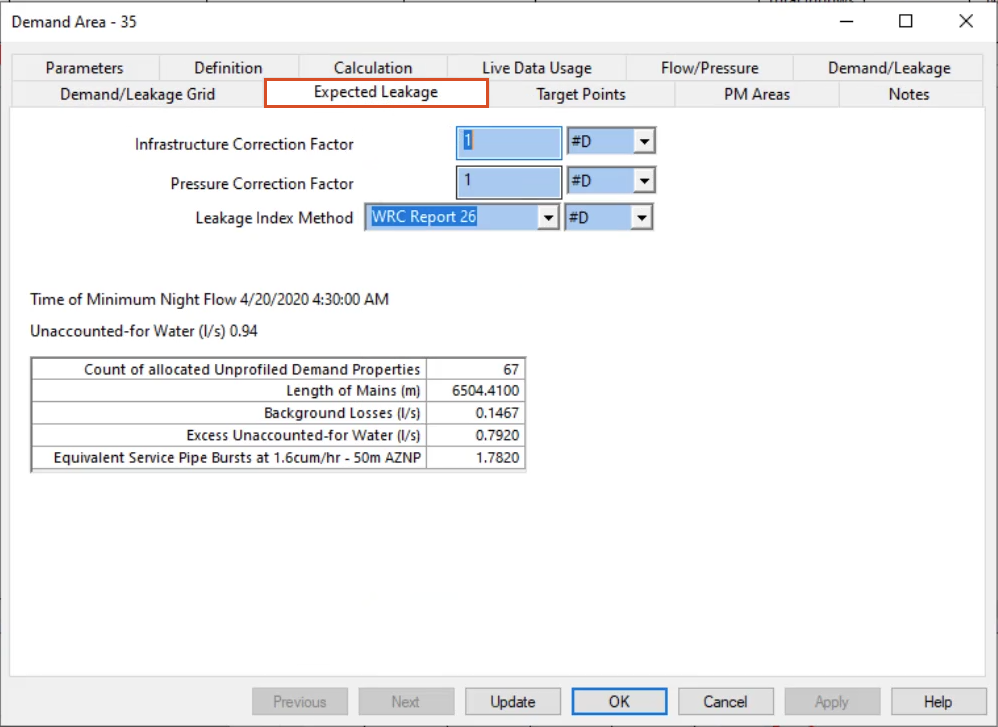Step-by-step Guide
In InfoWorks WS Pro, a demand area analysis provides data that allows users to review the current demand for water and project future potential demand areas.
To view and edit the parameters of the expected leakage calculation:
- Open the Demand Area Grid.
- Right-click Demand Area 35 and select Properties.

- In the properties dialog box, open the Expected Leakage tab.

- The Infrastructure Correction Factor (ICF) field displays a factor that indicates the relative condition of the mains. The expected range is between 0.1 and 2, where 0.1 indicates a good condition and 2 indicates poor.
- The Pressure Correction Factor (PCF) field displays a factor that is used to correct the AZNP, or average zone night pressure, to a standard 50m. The expected range is between 0.1 and 3. If a default value is chosen, then the value of the PCF will be calculated according to the chosen Leakage Index Method. The value for AZNP is taken from live data where available. Otherwise, the simulation results will be used.
- The Leakage Index Method uses either leakage indices or the 1.5 Power Law to calculate the Pressure Correction Factor.
- In the table, both Background Losses and Equivalent Service Pipe Bursts are calculated using the infrastructure and pressure correction factors, the number of props, and the lengths of mains.




